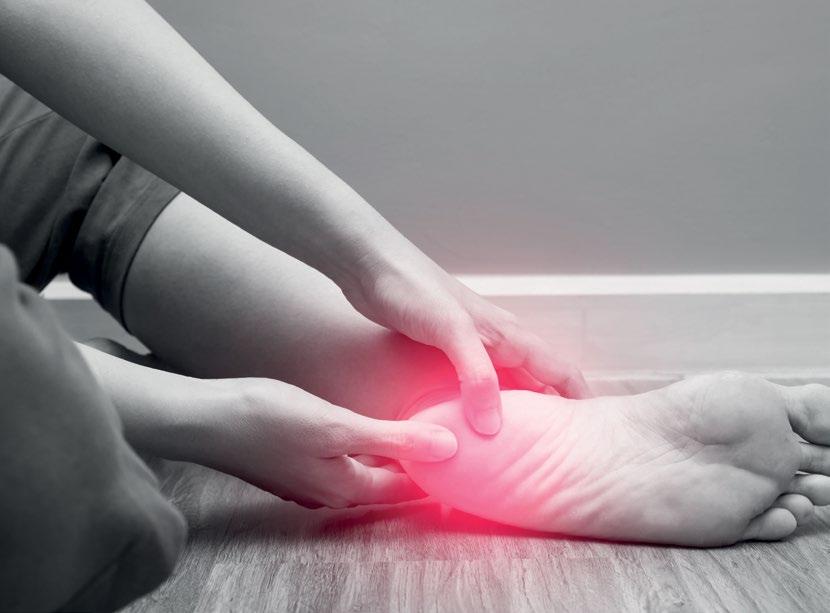
2 minute read
Why Are So Many Women Getting Plantar Fasciitis?
FROM A THROBBING PAIN IN THE LOWER END OF THE FOOT TO HARDLY BEING ABLE TO WALK; PLANTAR FACIITIS IS BECOMING INCREASINGLY COMMON, ESPECIALLY IN WOMEN AT YOUNGER AGES. DR. THOMAS NAU, CONSULTANT ORTHOPEDIC SURGEON INVESTIGATES THIS OFTEN PAINFUL AND DEBILITATING CONDITION.
DR. THOMAS NAU
Advertisement
Defined Plantar fasciitis is a common cause of heel pain, reveals Dr. Nau. “It is caused by an inflammation of the plantar fascia, which is a strong tissue on the bottom of our foot which connects the toes to the heel bone,” he says. “The cause of this condition is poorly understood however, there are certain risk factors such as age, certain type of exercises, and foot biomechanics which play a role such as flatfeet or a high arch, obesity, and also certain types of occupations that keep you on your feet all day.” Women are more likely to have it, the reason for this may be weight gain in pregnancy and wearing unsupportive shoes. Warning signs and treatment According to Dr. Nau, the early warning signs include classic pain on the bottom of the heel, especially after prolonged exercises or long time on your feet. “The treatment protocol involves, as the first line of treatment, the classic anti-inflammatory medications like ibuprofen or naproxen,” he says, “then, we prescribe a few sessions of physiotherapy where the therapist shows the exercises to stretch the plantar fascia and also to strengthen the muscles of the lower leg.” Some people benefit from orthotics from the shelf or better custom fit from a podiatrist. In very severe cases, also a walking boot or crutches may be suitable. If this does not give the right success, a series of injections can be tried, he says. “These injections are either anti-inflammatory or more modern treatments with regenerative agents such as hyaluronic acid or platelet-rich plasma.” These injections can be combined with extracorporeal shockwave therapy that has demonstrated to be effective in some cases, also. In very, very rare cases, even surgery may be necessary. Changes in lifestyle Usually, the symptoms with the aforementioned protocol can be controlled, reveals Dr. Nau. “In terms of lifestyle changes, aim towards reducing weight if you are overweight or maintaining a healthy weight,” he explains. “Wearing the right shoes may definitely help with good arch support and extra cushioning.” If you are exercising, proper warm up and stretching after the exercises are important. Also, adaptation to lowimpact sports such as swimming and bicycling may help as well. “In an acute episode, in addition to the medication, ice therapy can help reduce the pain and inflammation.”
Tips to Avoid Plantar Fasciitis • Lifestyle modification by reducing weight if you are overweight or maintaining a healthy weight. • Wearing the right shoes with good arch support and extra cushioning. • Proper warm up and stretching before and after exercises. • Adaptation to low-impact sports such as swimming and bicycling. H










